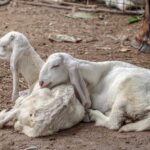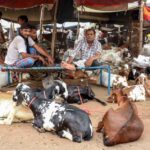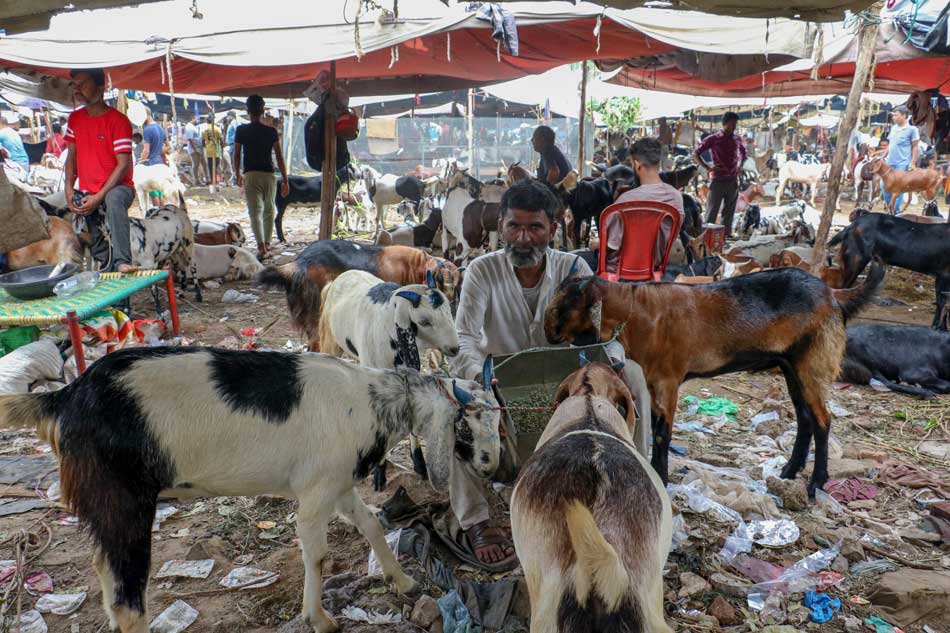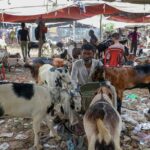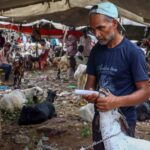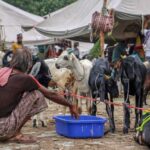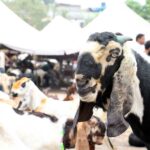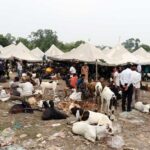Eid al Adha: Economic crisis, inflation diminishes appetite for goats
Each year, for about a month before Eid al Adha or Bakrid, a large market springs up near Jama Masjid, with scores of small tents covering a large field and a number of bleats, almost in chorus, ring through the air as thousands of goats are lined up there.
The goats are of various ages, sizes and varieties. From young kids, that have just been weaned off their mothers to fully grown ones. While two white kids use each other while resting, a large male, with big, pointed horns and as big as a donkey is busy munching on the grass.
The goats have been brought here by goat traders as well as goat herders from all around northern India, with most of them from parts of western Uttar Pradesh, but also from Rajasthan and Haryana, who turn up here, hoping to get a good price for their animal. The prices for a grown up goat can vary from INR 10,000 to even more than INR 100,000.
But the mood at the Bakra Mandi is anything but upbeat. The sellers say that inflation has cut into their margins dramatically and buyers have been staying away for most part of the month. Yakub Qureshi, a 45-year-old goat trader from Muzaffarnagar, has been in this business for 25 years. He says he buys goats from various villages near his home and then bring them to Delhi for selling. He says that ironically situation was better last year, even during the second wave of Covid-19 as the market was held for a very duration and the sellers had no problem in selling their animals in a couple of days, with a decent margin.
“But this year, I am not getting the right price for the goats. People are trying to negotiate hard and even hope that if they come back just a day before Eid or even on the day of Eid, I will be desperate to sell at any price. But, you tell me if I bought something for INR 20,000, how can I sell it for INR 15,000. It will be a big loss, in terms of transportation and the cost of keeping the goat for so many days. So I would rather take it back with me,’’ Qureshi tells Media India Group.
Another goat trader, Ahsan Qureshi, a resident of Sambhal in Moradabad in western Uttar Pradesh, agrees with Yakub. Ahsan has been in the business of trading for about 12 years and comes each year to the Jama Masjid market for selling his animals.
He blames inflation for the poor state of the market. “Due to the high inflation, the cost of goats and goat feed has gone up very much. But on the other hand, I understand that most of our buyers are also feeling the pinch of paying so much more for everything. Hence, they offer us half the rate we want. But what will they do? Their pockets are empty, they don’t have jobs and on top of that inflation keeps on rising. So they are worried about future and don’t want to spend so much,’’ Ahsan Qureshi tells Media India Group.
Thus, as the market winds up today, many of the goat sellers are going back to their villages, with many of their animals in tow, hoping that the next year they will be able to get a better price for their animals. The goats, on the other hand, are unlikely to be sad about going back home and live for another year.


